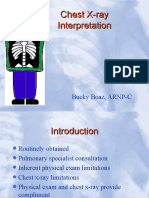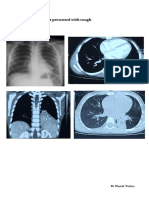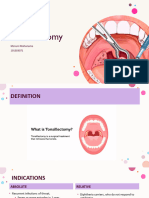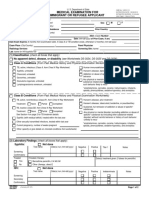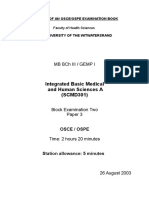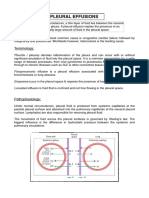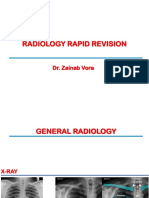0% found this document useful (0 votes)
146 views125 pagesCXR, CT, Mri
This document provides an overview of key radiographic features seen on chest x-rays, CT scans, and MRI for various pulmonary and mediastinal conditions. It describes the appearance of pneumonia, pleural effusions, pneumothorax, bronchiectasis, pulmonary fibrosis, lung collapse, pulmonary embolism, tuberculosis, lung cancer, cardiogenic pulmonary edema, chronic obstructive pulmonary disease, and mediastinal widening/lymphadenopathy. For each condition, it highlights abnormal findings and their radiological significance.
Uploaded by
mevunimCopyright
© © All Rights Reserved
We take content rights seriously. If you suspect this is your content, claim it here.
Available Formats
Download as PDF, TXT or read online on Scribd
0% found this document useful (0 votes)
146 views125 pagesCXR, CT, Mri
This document provides an overview of key radiographic features seen on chest x-rays, CT scans, and MRI for various pulmonary and mediastinal conditions. It describes the appearance of pneumonia, pleural effusions, pneumothorax, bronchiectasis, pulmonary fibrosis, lung collapse, pulmonary embolism, tuberculosis, lung cancer, cardiogenic pulmonary edema, chronic obstructive pulmonary disease, and mediastinal widening/lymphadenopathy. For each condition, it highlights abnormal findings and their radiological significance.
Uploaded by
mevunimCopyright
© © All Rights Reserved
We take content rights seriously. If you suspect this is your content, claim it here.
Available Formats
Download as PDF, TXT or read online on Scribd
/ 125






















































